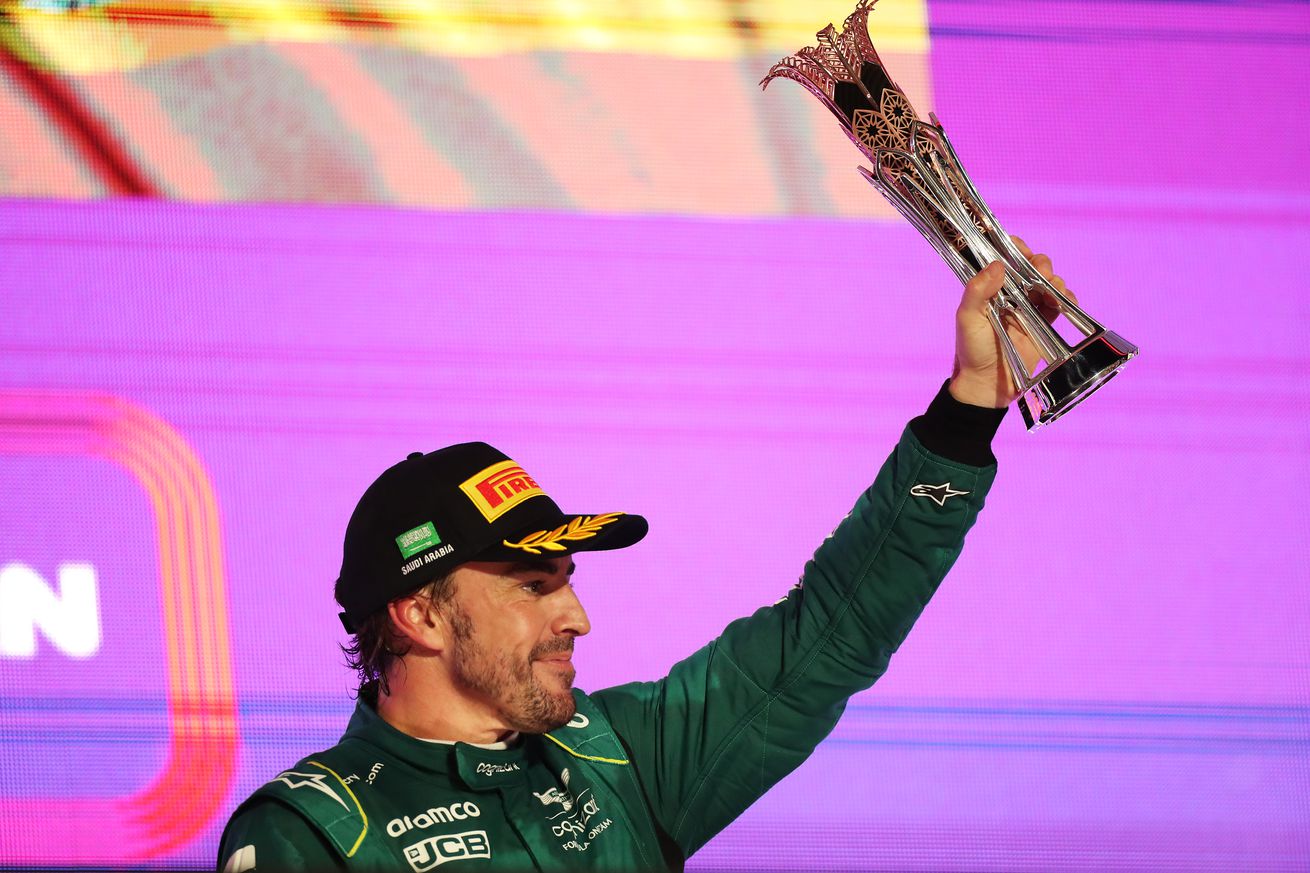Photo by Peter Fox/Getty Images
Fernando Alonso finished third, then he didn’t, and then he did again
It took a lot longer than expected, and an appeal of a penalty to boot, but Fernando Alonso can now say with certainty that he finished in third place at the Saudi Arabian Grand Prix.
And that he has earned 100 podiums over his illustrious Formula 1 career.
Despite finishing in P3 in Sunday’s Saudi Arabian Grand Prix at Jeddah Corniche Circuit — and partaking in the podium celebration along with Sergio Pérez and Max Verstappen — Alonso then received word that he was being given a ten-second penalty. That penalty would drop him down into P4, behind George Russell of Mercedes.
Early in the Grand Prix, Alonso was given a five-second penalty for an improper start, as he was not properly aligned in his starting position at the start of the race. When a safety car came out after his teammate Lance Stroll suffered a failure, Alonso served that five-second penalty during his pit stop.
The race went on, and Alonso maintained his spot in third place behind the Red Bull duo. However, in the closing laps of the race Russell heard from his pit box that race stewards were contemplating an additional five-second penalty for Alonso.
Alonso heard something similar from his team, and was instructed to maintain a more than five-second lead over Russell. “Would be nice to have five seconds to Russell,” Alonso was warned. While the team believed they were “in the clear,” they wanted to be as safe as possible.
Alonso extended his gap to over five seconds to Russell, leading him to believe that he indeed was in the clear, and with the century mark in podiums in hand.
However, following the podium session, word came from FIA that he was indeed being given a penalty, and a ten-second one at that.
FIA tried to clarify the situation following the race:
However, Alonso and Aston Martin appealed the penalty.
You can see for yourself what happened:
At issue was whether the rear jack carrier made contact with the AMR23. Under current regulations, that apparently counts for “working on the car,” which is not permitted during the duration of the penalty.
During the appeal, Aston Martin provided video evidence of seven different instances of cars being touched by the jack when serving a penalty. In those seven instances, no additional penalty was handed down by race stewards.
Eventually the verdict came down. No penalty, and Alonso’s P3 was reinstated.
“Having reviewed the new evidence, we concluded that there was no clear agreement, as was suggested to the Stewards previously, that could be relied upon to determine that parties had agreed that a jack touching a car would amount to working on the car, without more,” said the decision from FIA. “In the circumstances, we considered that our original decision to impose a penalty on Car 14 needed to be reversed and we did so accordingly.”
You can read their full decision here:
This was likely the correct result, but the bigger question might be this: Why did it take so long for Alonso and Aston Martin to be told this was even a possibility? As noted in the first of the two FIA documents, the potential for a second penalty did not come to light until the final lap of the race. And as Alonso himself stated after the Grand Prix, “[w]hen you have 35 laps to apply the penalty and you wait until after the podium, there is something wrong in the system.”
Had Alonso and Aston Martin been told earlier in the race that this was a possibility — or even been given the additional penalty earlier in the race — they could have altered their strategy to push even further ahead of Russell.
Instead, they were forced to bring the receipts to an appeal well after the finish.
So, while the right result was reached, perhaps FIA could be quicker with these determinations in the future.













